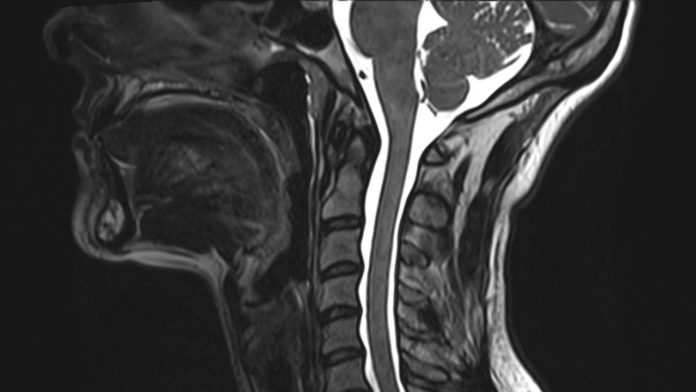The spinal cord is a significant part of the nervous system essential for- controlling the movement of arms and legs, giving a sense of touch and a notion of where our bodies are in space.
How does the spinal cord support such complex behaviors?
To answer this question, researchers have ached to approach the spinal cord’s function in vivo. Until now, they used to depend on animal studies, But now the approach of fMRI provides another window into the richness of spinal cord signals, directly in humans.
By combining tailored protocols for spinal cord fMRI with advanced analysis techniques, EPFL scientists disentangled these signals and view the spinal cord in action. They obtained unprecedented views of the spinal cord’s functional architecture from 19 healthy subjects. For the first time, this study has revealed how dynamic the spinal cord is, even for rest issues.
Nawal Kinany, the first author of the study, said, “One of the main challenges about observing spinal cord function is getting rid of noise from the rest of the subject’s body, like breathing, the heartbeat, or simply seeing beyond the surrounding vertebral bones. We managed to decompose spontaneous spinal activity into meaningful networks, with a level of neuroanatomical detail that had never been reached before.”
From the subject’s perspective, one needs to lie down in an fMRI scanner and stay stable all through the scan for around 10 minutes. The resulting images are then examined to give a 4-dimensional view – through space and time– to see the elements of spinal circuits within the subject’s anatomy.
Dimitri Van De Ville, who leads EPFL’s Medical Imaging Processing Lab, said, “These results are clear evidence that spinal resting-state activity is richly organized and thus must bear physiological relevance beyond what was assumed so far.”
The spinal cord is a crucial player in all human behavior. The scientists targeted the cervical level because of its involvement in controlling arm and hand muscles. Their approach could help understand how spinal circuits are orchestrated to support the wide range of movements we perform in our everyday life.
Silvestro Micera, who is the Bertarelli Foundation Chair in Translational Neuroengineering at EPFL, said, “Only a deeper understanding of human motor control can allow for the development of more effective neurorehabilitation approaches. Our new method provides an essential tool in this direction.”
“Tested for now on healthy subjects, we believe that these new protocols will one day be a valuable tool for evaluating the status of dysfunctional or injured spinal cord circuitry, which could promote the development of targeted therapies that rebalance spinal activity or optimally harness the spared connections.”
The study was done at Campus Biotech in collaboration with Silvestro Micera, who is the Bertarelli Foundation Chair in Translational Neuroengineering at EPFL and Professor of Bioelectronics at Scuola Sant’Anna in Pisa, Italy, as well as with Dimitri Van De Ville, who leads EPFL’s Medical Imaging Processing Lab and is also affiliated with the Department of Radiology and Medical Informatics of the Geneva University.
Journal Reference:
- Nawal Kinany et al. Dynamic Functional Connectivity of Resting-State Spinal Cord fMRI Reveals Fine-Grained Intrinsic Architecture. DOI: 10.1016/j.neuron.2020.07.024
